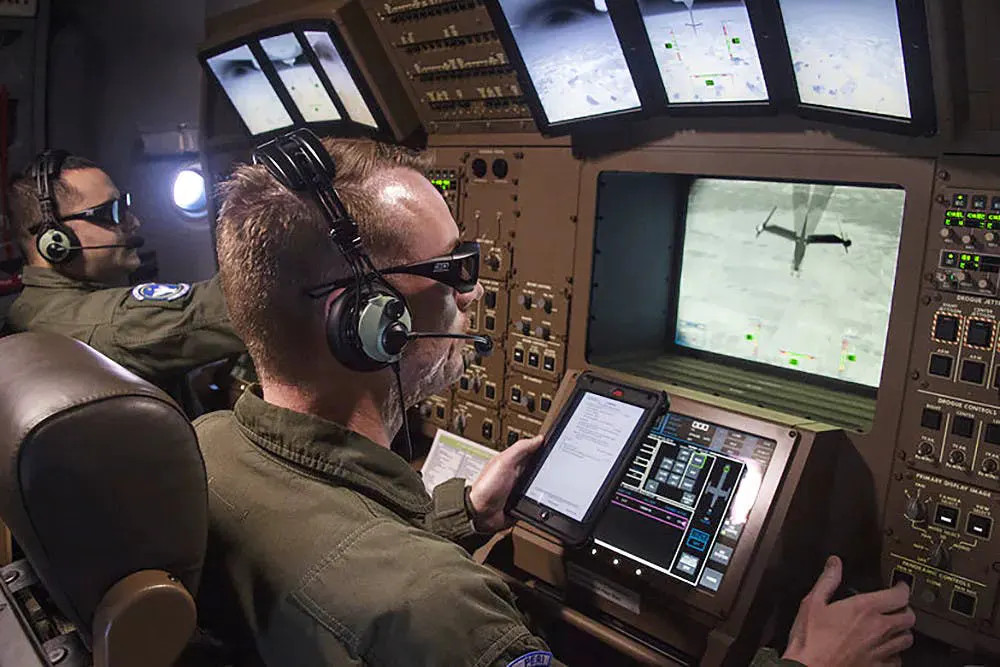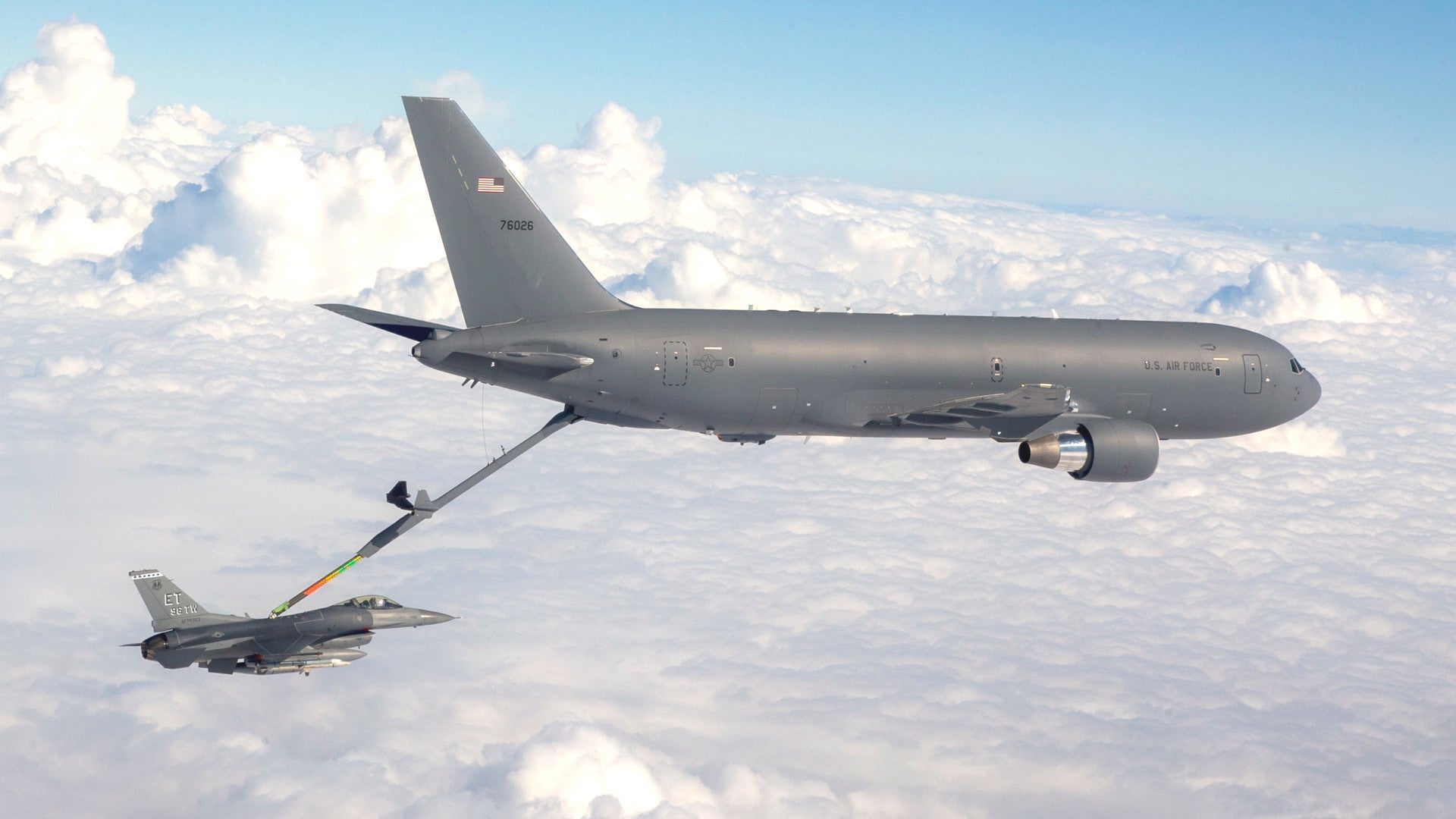Boeing’s seemingly perpetually troubled KC-46A Pegasus tanker has yet another major problem, its fuel system leaks excessively. This comes nearly a month after the U.S. Air Force made clear that it would not use its existing examples for aerial refueling, their core mission set, except in an absolute emergency. This was due to already serious existing issues, especially with the complex Remote Vision System that boom operators use to see what’s going on at the back of the aircraft while linking up with receiving aircraft.
The Air Force announced that it had defined the KC-46A’s fuel system leaks as a so-called “Category I” deficiency on Mar. 30, 2020. Category I issues are problems that would prevent the aircraft from performing one or more primary missions. The service also said that it had first become aware of the leaking in July 2019 during a test, but had initially categorized it as a less severe issue.
“The Air Force and Boeing are working together to determine the root cause and implement corrective actions,” according to an Air Force statement. “The KC-46 Program Office continues to monitor the entire KC-46 fleet and is enhancing acceptance testing of the fuel system to identify potential leaks at the factory where they can be repaired prior to delivery.”
The Air Force took delivery of its first KC-46A in January 2019, years behind schedule. As of December, the service had received 30 of the tankers. Even before the announcement of the fuel system leaks, the Air Force had already publicly described a number of other Category I deficiencies with the existing aircraft, as well as those in production right now.
This includes the aforementioned issues with the Remote Vision System (RVS), as well as the fact that it requires more force for the boom on the Pegasus to connect with a receiving aircraft than with previous Air Force tankers. Boeing is still working to fix these problems, but has resolved another Category I issue with the cargo locks on the cabin floor in the aircraft.

“Boeing is contractually obligated to remedy this deficiency at no additional cost to the government,” the Air Force statement adds with regards to the fuel system leaking issue. The service signed a firm, fixed-price contract with Boeing for the KC-46, which has left the company on the hook for hundreds of millions of dollars worth of fixes already.
It’s not clear why it took eight months for the Air Force to upgrade the leaking issue, which it describes as excessive and for which it says there is no known root cause, to a Category I deficiency. The service has also not provided a timetable for when it might heave the issue resolved. Boeing told Defense News that it had fixed seven of 16 planes with the issue, despite the Air Force saying the root cause remained unexplained.
“The KC-46 fuel system is equipped with redundant protection for fuel containment,” Boeing’s statment to Defense News further explained. “In some cases with this issue, aircraft maintenance crews are finding fuel between the primary and secondary fuel protection barriers within the system.”
Of course, the Air Force had already said it will not use the KC-46A for aerial refueling missions on a day-to-day basis or in combat until Boeing completely overhauls the RVS system. At present, work on a fix for that problem isn’t expected to be finished until some time between 2023 and 2024 and it will take some amount of time afterward to update the dozens of existing aircraft.

It is possible that the expanding COVID-19 pandemic may further delay fixes to all of the KC-46A’s outstanding issues. Boeing suspended production of new Pegasuses, as well as P-8A Poseidon maritime patrol planes, last week after a worker at one of the company’s plants in Washington State died from complications from the novel coronavirus.
“Certain non-production work for all commercial derivative aircraft programs, including for the KC-46 remote vision system enhancements, will continue being done by employees working remotely,” Boeing told Defense News on Mar. 23.
All of this is already driving the Air Force closer and closer to hiring private contractors to provide aerial refueling solutions. The service has already begun to walk back a plan to retire a number of existing tankers, which other senior U.S. military officials have warned could create a dangerous capability gap while the KC-46As remain largely incapable of performing their main mission set.
No matter what happens, the fuel system leaks are just another black mark for the tanker program and another issue that Boeing will have to fix before the Air Force will be able to make any real use of them on aerial refueling missions.
Contact the author: joe@thedrive.com
